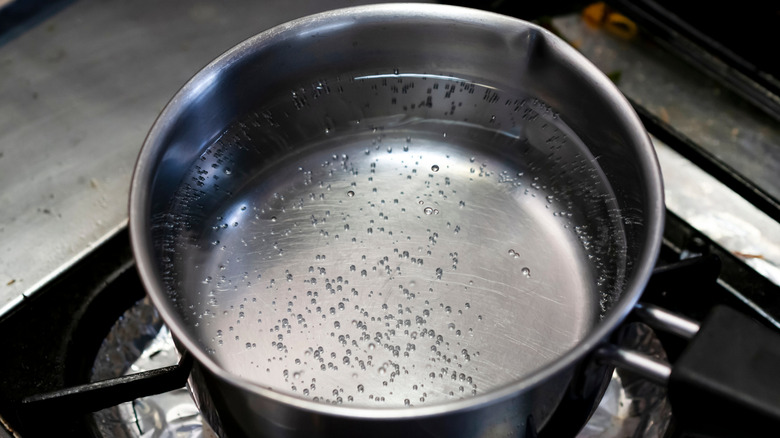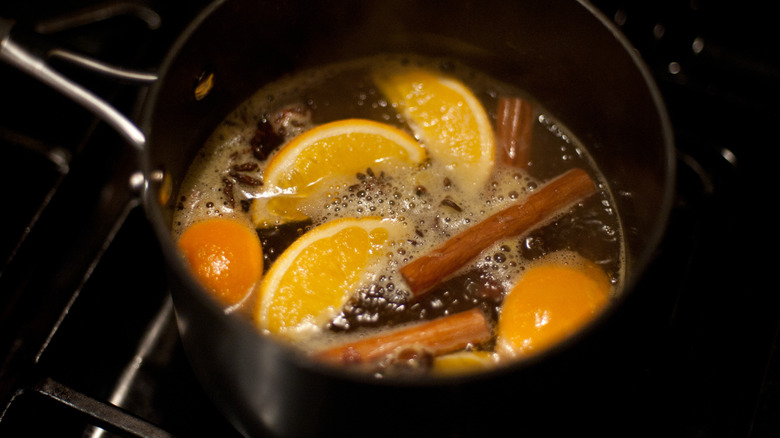Here's How Simmering Is Supposed To Work
Steaming, poaching, simmering, and boiling — both novice and experienced home cooks frequently find these terms confusing. All of them refer to cooking food using heated water, but at different temperatures and with different amounts of force. Understanding these differences is crucial to honing your cooking skills, enabling you to easily poach chicken or make tender, properly steamed vegetables.
Of these terms, simmering may be the one that stumps the most home cooks. Steaming and poaching use gentle heat to cook foods, while boiling uses very hot, bubbling water to soften hard ingredients like dried pasta and grains. Simmering, on the other hand, lands somewhere in between poaching and boiling. Characterized by light bubbling and steady temperatures, simmering is the ideal cooking method for soups, stews, sauces, and other foods that respond well to low 'n slow cooking.
While boiling your soup is a big mistake that can leave it scorched and flavorless, simmering protects the integrity of your ingredients, preventing them from becoming mushy, tough, or burned. Simmering water sits between 185 and 205 degrees Fahrenheit which cooks food fairly slowly, helping to ensure all your ingredients reach the ideal texture with gentle bubbling. It's also fantastic for deepening flavors and helping them to marry — which is why slowly simmering something like a basic tomato sauce makes it taste so much better. It enables the oils present in seasonings like garlic, onion, oregano, and rosemary to blend seamlessly into the sauce.
How to maintain a steady simmer
Possibly the most challenging part of simmering your favorite soups and sauces is preventing them from boiling. Generally speaking, keeping the temperature fairly low (medium-low is usually the sweet spot) helps keep this from happening. However, if you're cooking a small amount of food or your stove runs hotter than average, you may need to check on your pot frequently and adjust the heat to maintain a simmer.
If your food does come to a boil, don't panic — there are several simple steps to quickly bring it back to the right temperature. First, move the pot to a cool burner, which should stop the bubbles almost immediately. Next, stir the contents of your pot, especially if it's something thick like bisque or tomato sauce. Stirring helps release steam and excess heat, cooling your food slightly so it's less likely to begin boiling again once it's back on the burner.
One effective way to maintain a steady simmer is to bring it to a rolling boil first. This sounds counterintuitive, but it's much easier to reduce a boil to a simmer than it is to bring cold food to a simmer and keep it there. The idea is to let your food boil for just a few moments before turning the heat down until you see gentle bubbles form across the surface. You'll still need to monitor things, but this method provides much more control over the temperature inside your pot.

